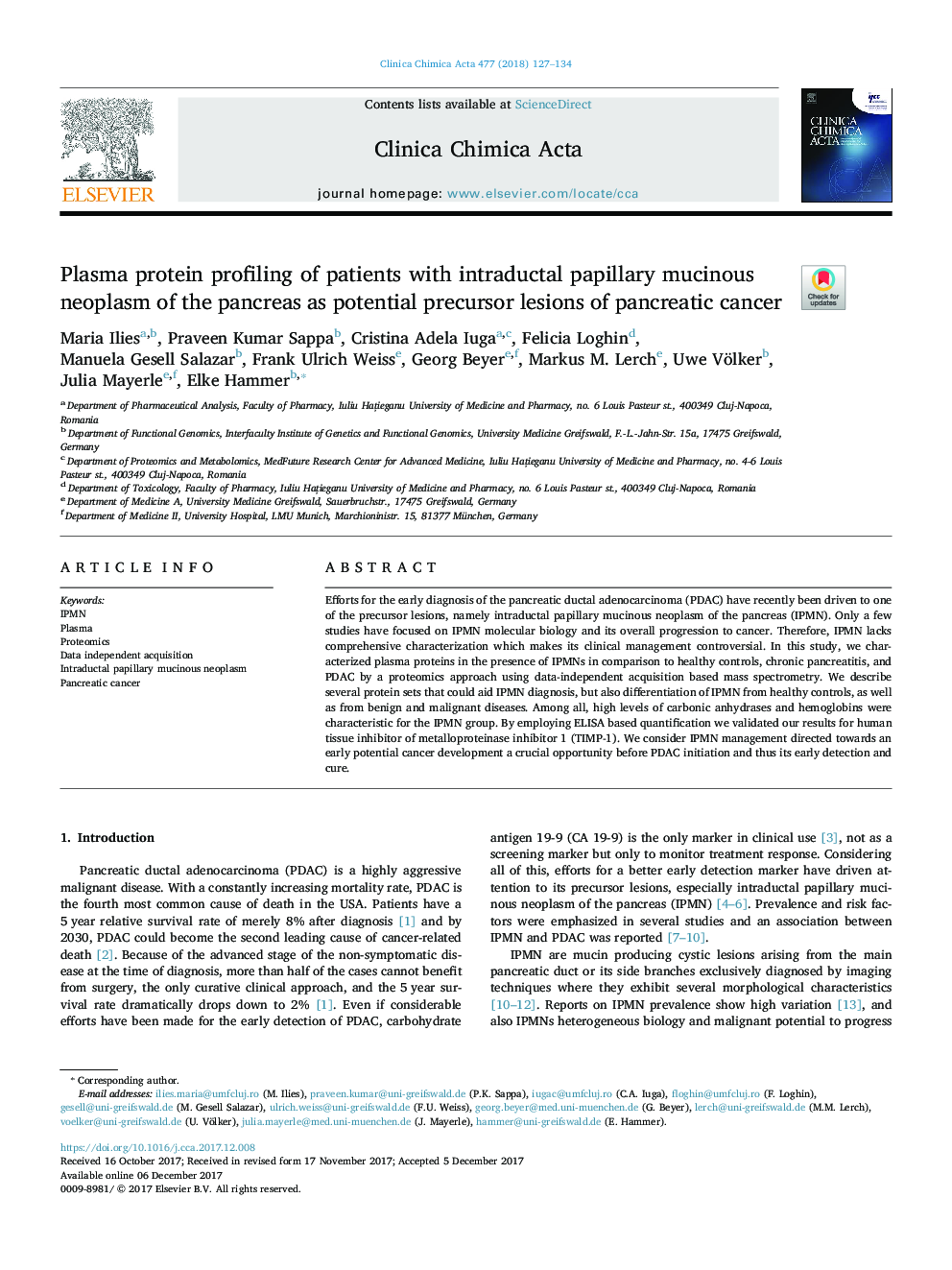| Article ID | Journal | Published Year | Pages | File Type |
|---|---|---|---|---|
| 8309759 | Clinica Chimica Acta | 2018 | 8 Pages |
Abstract
Efforts for the early diagnosis of the pancreatic ductal adenocarcinoma (PDAC) have recently been driven to one of the precursor lesions, namely intraductal papillary mucinous neoplasm of the pancreas (IPMN). Only a few studies have focused on IPMN molecular biology and its overall progression to cancer. Therefore, IPMN lacks comprehensive characterization which makes its clinical management controversial. In this study, we characterized plasma proteins in the presence of IPMNs in comparison to healthy controls, chronic pancreatitis, and PDAC by a proteomics approach using data-independent acquisition based mass spectrometry. We describe several protein sets that could aid IPMN diagnosis, but also differentiation of IPMN from healthy controls, as well as from benign and malignant diseases. Among all, high levels of carbonic anhydrases and hemoglobins were characteristic for the IPMN group. By employing ELISA based quantification we validated our results for human tissue inhibitor of metalloproteinase inhibitor 1 (TIMP-1). We consider IPMN management directed towards an early potential cancer development a crucial opportunity before PDAC initiation and thus its early detection and cure.
Keywords
Related Topics
Life Sciences
Biochemistry, Genetics and Molecular Biology
Biochemistry
Authors
Maria Ilies, Praveen Kumar Sappa, Cristina Adela Iuga, Felicia Loghin, Manuela Gesell Salazar, Frank Ulrich Weiss, Georg Beyer, Markus M. Lerch, Uwe Völker, Julia Mayerle, Elke Hammer,
